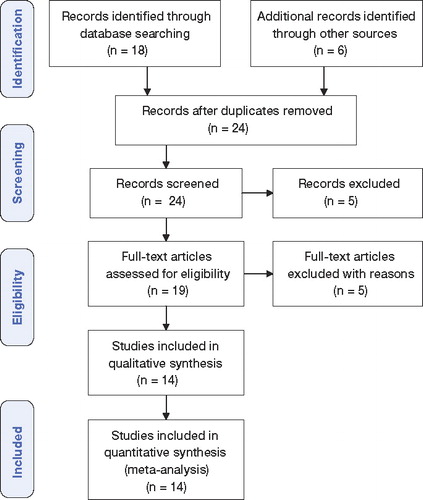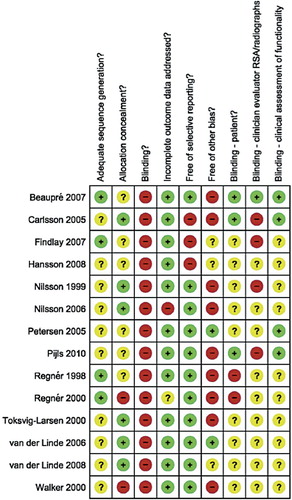Figures & data
Table 1. The number of evaluable knees used from each trial and included in outcome analysis
Table 2. Durability (pooled data)
Figure 3. RSA analysis year 2; HA-coated vs. other tibial fixation; all implants except for those with screw fixation of tibial baseplate.

Table 3. Function scores from data at 2 years and 5 years. Statistical method used: Inverse variance, fixed effects analysis model
Figure 4. Adverse events; complications resulting from the surgical procedure and/or subsequent need for surgical intervention or immediate medical attention.

Figure 5. RSA analysis year 2; HA-coated vs. other tibial fixation; all implants except for those with screw fixation of tibial baseplate using an expanded definition of MPTM ≥ 0.2 mm in 2 years.

Figure 6. Risk-of-bias graph summary – review of authors' judgments about each risk-of-bias item presented as percentages across all the studies included.



